Reviewing the types of pipe used when installing residential fire sprinklers and key system components
In the last installment of our series on installing residential fire sprinklers, we explained some of the main components of residential fire sprinklers, including the water supply, pumps (if necessary), and the types of sprinkler heads that can be used and their appropriate placement. In this piece, we round out our look at major system components, delving into a homeowner’s options for types of pipe in home fire sprinklers as well as the NFPA guidance and local government codes that may shape these choices.
Are you looking to buy components for a home fire sprinkler system? If so, feel free to skip directly to QRFS’ selection of residential fire sprinklers, preassembled risers, cover plates, escutcheons, CPVC fittings, and more — or use the search bar at the top of the page.
The rundown on residential fire sprinkler pipes
The network of pipes in a home sprinkler system can vary in both materials and the length required to cover the size of the house, making it one of the most important factors in the expense of installing residential fire sprinklers.
NFPA 13D: Standard for the Installation of Sprinkler Systems in One- and Two-Family Dwellings and Manufactured Homes gives wide latitude on the type of material that can be used, hoping to drive innovations that lead to lower costs and more frequent installation of home systems. This strategy has succeeded: Modern systems can have pipes made of expensive metals as well as less expensive thermoplastics used in modern plumbing applications, including chloro-polyvinyl chloride (CPVC) and cross-linked polyethylene (PEX).
The primary options include:

- Metal: Metal pipes listed for home fire sprinkler use may be made of steel, copper, or brass. The benefits of metal pipe include its durability, its ability to withstand heat and thus be exposed in areas where there may be a fire, and its higher pressure tolerance. The main drawbacks of metal are its expense, corrosion potential, and the internal roughness of pipes, which can add friction to the system. As cheaper, high-performance alternatives have evolved, the use of metal pipes in homes is getting much less common. But they are still a viable option in some scenarios.
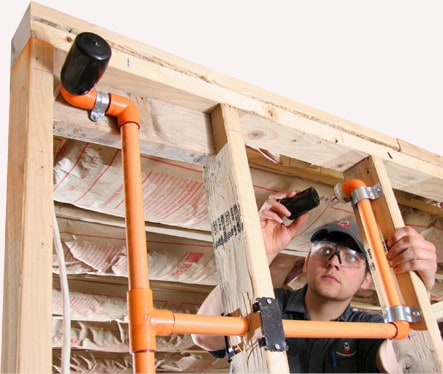
CPVC (chloro-polyvinyl chloride)
This commonly used plumbing pipe is also listed for home fire sprinkler use (marked by an orange color) and has significantly reduced the cost of installations; the material itself is cheaper, and it takes less time to install CPVC pipe than metal alternatives. It is sturdy and reliable, the joints are attached with a special glue that reduces the “sweating” seen in metal pipes, and it is resistant to corrosion. CPVC is designed to withstand higher temperatures than its cousin, PVC, but some authorities having jurisdiction (AHJ) may only allow it to be exposed in areas that could be subject to fire under specific conditions, and after being granted a variance.
Check out these blogs to learn more about CPVC fire protection systems:
- CPVC Pipe and Fittings in Fire Sprinkler Systems: Use and Care
- Fire Sprinkler System Pipe Material: The Pros and Cons of Copper and CPVC
- How to Avoid CPVC Pipe Problems Due to Chemical Incompatibilities
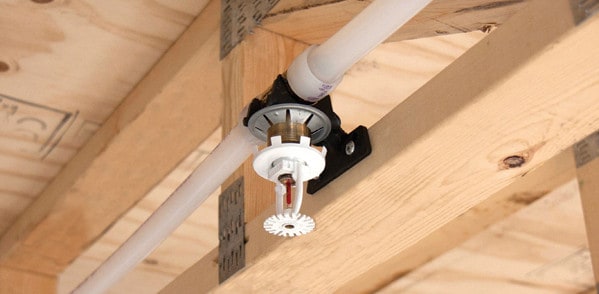
PEX (cross-linked polyethylene)
This flexible tube was originally approved for only multipurpose home fire sprinkler systems because NFPA required all nonmetallic pipes to have a higher pressure threshold than PEX could handle. PEX or any other listed nonmetallic material can now also be used in standalone systems, however, “if the maximum static pressure from the water supply does not exceed 80 psi” — or an automatic pressure releasing valve is used when the pressure from the water supply is higher than the limit.
PEX is less expensive and easier to install than rigid pipe (CPVC or metal); because it can bend around corners. It also uses about half of the fittings of rigid pipe and thus has fewer potential leak points. While PEX cannot handle as much pressure as rigid pipe, this isn’t usually an issue with home installations. Wet sprinkler system pipe should always be insulated or kept in temperature-controlled areas, but PEX can expand to three times its diameter without breaking, which safeguards the integrity of the system if a section of it is exposed to freezing temperatures.
Read this blog for a comparison of thermoplastics: CPVC vs. PEX: What’s the Best Choice for Home Fire Sprinkler Systems?
NFPA allows the use of any of these options—metal, CPVC, or PEX—that are “listed for use in fire sprinkler systems by an approved [safety testing] organization” and meet pressure and flow requirements according to the hydraulic design of the system.
The water flow in a system (gallons per minute) is calculated in light of the pressure, the length of travel in the pipe, gravity, and the pipe’s diameter, and NFPA publishes calculations for pipes ranging anywhere from 3/8” to 3” in diameter. A qualified fire sprinkler installer will work with all of these variables when designing the system.
Which type of pipe should be used when installing residential fire sprinklers?
It depends. Sometimes a combination of metal and thermoplastic pipes is used, with metal in unfinished basements, connecting to a network of CPVC pipes that run throughout the rest of the house. In certain cases, like a retrofit of an existing house where the pipe needs to be exposed and run up through a closet, a contractor may use a section of metallic pipe joined to CPVC within the walls, if local authorities require the pipe to be able to withstand exposure to fire.
Generally speaking, it is advisable and becoming vastly more common for systems to exclusively use thermoplastic pipe since it is much less expensive and easier to install. CPVC pipes may still be the most commonly used material, though the approval of PEX for all systems has made that material increasingly popular, especially since the flexible tubes give an installer more latitude when running it through the walls and ceilings. And PEX lends itself to multipurpose systems that integrate with a home’s plumbing and lower the (already low) maintenance of systems, plus can avoid having to install a backflow preventer in some jurisdictions.
The pipe-material decision also hinges on whether the project is a new build or a retrofit of an existing home: The cheapest (and in some ways, most effective) option for new construction is a multipurpose system using PEX, whereas CPVC or metal may be easier for a retrofit of a standalone system. You could retrofit a full multipurpose system into an existing home, but it will likely involve ripping open more walls and ceilings.
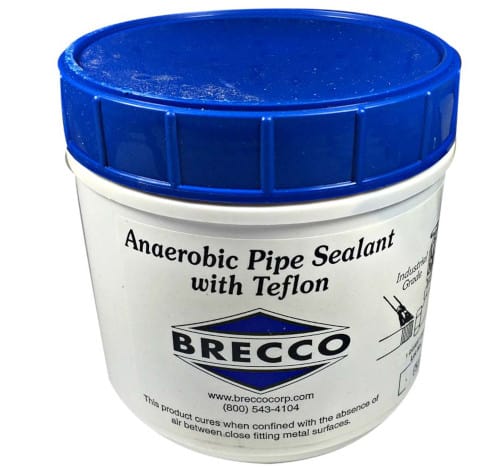
Special considerations for fire sprinkler pipe
Every type of pipe must be fitted and joined correctly for it to be able to withstand the system pressure. CPVC requires the application of special “glue” (really a solvent cement), and PEX requires fewer connections but has an arguably trickier connection process that requires crimping or clamping a tube to seat and affix it properly. Again, a qualified installer who has experience with these systems will know exactly how to do this to avoid leaks or failure.
It’s worth noting that a different form of plastic, polybutylene (PB), was used in both residential plumbing and fire sprinkler systems for roughly a decade starting in the mid-1980s. But its manufacture ceased after concerns that “that oxidants in the public water supplies, such as chlorine, react with the polybutylene piping and acetal fittings causing them to scale and flake and become brittle.”
Thus, if you have an existing home with PB (plumbing and/or a fire sprinkler system), finding replacement parts will be difficult. The failure of a portion of the system may call for a complete retrofit with different pipe materials.
Finally, if you run any exposed pipe in an attic that is subject to freezing temperatures, it’s essential to properly insulate it. If the water freezes, it can break the pipe and compromise the system. Some contractors avoid having to do this by only using sidewall sprinklers on the top floor of a home. This setup runs the uppermost pipe through walls in climate-controlled portions of the house instead of the attic.
Installing residential fire sprinklers: other important system components
The control valve
Every sprinkler system has a control valve that shuts to stop the water flow and allow for maintenance or repairs. A single control valve can also serve the domestic water supply and the sprinkler system, even if the sprinklers are standalone. Making sure the control valve stays open is the most important factor in whether a sprinkler system will work during a fire.
According to statistics compiled by NFPA, fire sprinklers only failed to deploy in 8% of studied fires between 2015 and 2019. And in 57% of those cases, the failure happened because someone had shut off the system. Control valves need to be kept open, and the ways to guarantee it include:
- A single control valve that serves both the fire sprinkler and the plumbing. If it’s shut off, the residents will know it when the taps don’t work.
- Control valves serving fire sprinklers should be well-marked and can be secured with a lock and/or chain to keep them from being accidentally shut off.
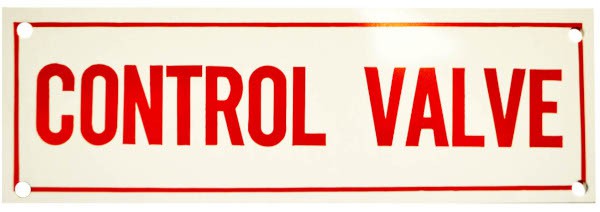
A waterflow alarm
NFPA doesn’t require installing residential fire sprinklers with a waterflow alarm, but specific local governments do. As you’ve likely guessed, this alarm sounds when the sprinklers are activated and water begins to flow through the system. Most of them use a plastic paddle that is inserted into the pipe; when the paddle is moved by enough water, it triggers a bell. These alarms may be connected to a centralized alarm monitoring service which will dispatch firefighters to the home.
A waterflow alarm will need to be briefly tested as part of regular annual testing. If it’s connected to an alarm monitoring service, the owner will need to motify them prior to the test.
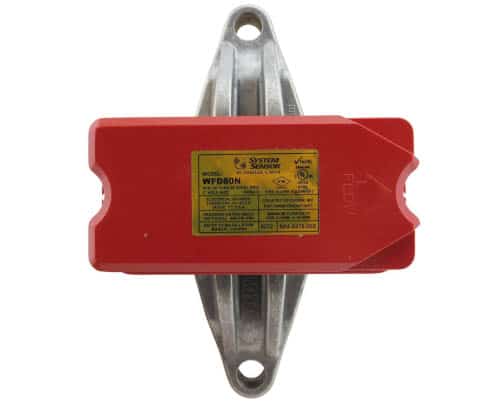
Backflow preventers and water meters
Some local water authorities require the use of a backflow preventer and a water meter. The backflow preventer stops stagnant water that sits in the sprinkler system from traveling back into the potable water supply, whereas water meters enable local authorities to monitor and bill separately for sprinkler system usage.
Each of these additions adds some friction to the system, which ups the pressure requirements that must be accounted for in the hydraulic calculations that inform a system’s design. NFPA stipulates the use of taps and meters of at least 1” to minimize this friction. A significant benefit of a multipurpose system is that it requires neither of these components since the sprinklers are integrated with the home’s circulating cold-water plumbing.
Choose the right components for the right sprinkler system
In the end, the right system for your home depends on what will work best for your circumstances and structure, the expense, and any local government requirements that add complexity. Regardless of the exact system, all of them are reliable and becoming even more affordable, while continuing to save lives and property — making sprinklers a potentially invaluable investment.
Check out QRFS’ selection of residential fire sprinklers, preassembled risers, cover plates, escutcheons, CPVC fittings, and more — or use the search bar at the top of the page.
If you have any other questions about residential fire sprinklers or need help finding an item, give us a call at 888.361.6662, or fill out our contact form and we’d be happy to help.
This blog was originally posted at QRFS.com/blog. If this article helped you, check us out at Facebook.com/QuickResponseFireSupply or on Twitter @QuickResponseFS.


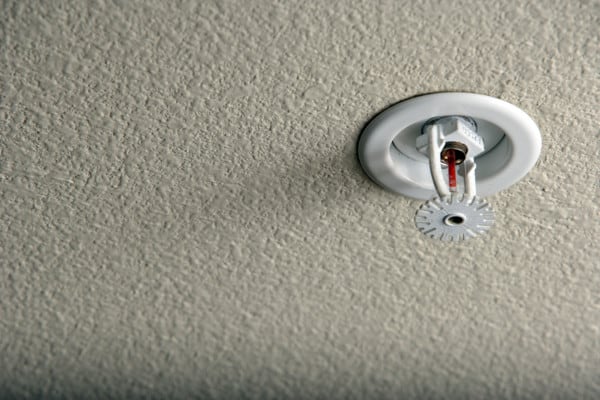
I have very low PSI – 12 and understand that I am in need of a pump. I do not know if I also need a tank or where the pump is installed in relation to the other components. I am not familiar with the components and requirements of what I will need and could use some help . Thank you.
David Z.
310 714-3808
David, thanks for reaching out! For installing a new pump in your system, we recommend working with a licensed fire sprinkler contractor. We have an article on tips and considerations for selecting a sprinkler contractor. We hope this helps!
i have a sprinkler head in my shower area. the ceiling has a drop down portion that would seem to be interrupted if the sprinkler was set off. is there a standard or legal distance that a spray head must be set away from a barrier/ceiling wall?
Mark – yes, there are sprinkler obstruction rules, but we’re not sure we can picture what this “drop down section” consists of. For code and standards interpretation questions like this, you can try our Ask a Fire Pro service. Click the link to submit your question with some information about your building, and a fire protection professional will provide an answer based on standards and codes. Our pros include AHJs, contractors, engineers, and code experts with 150+ years of combined experience!
Looking for installers of a combined, plumbing fire suppression system. For a subdivision with 44 single-family homes.
David — Please check out our blog on finding a qualified fire protection contractor. Thanks for reading!